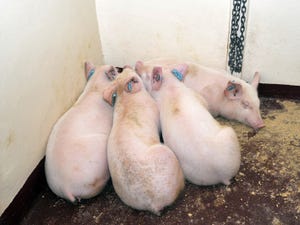Humans Still Cause the Most Antibiotic Resistance
October 29, 2013

I was out of the country when CDC (Centers for Disease Control) released their new report on Antibiotic Resistance Threats for 2013, so it has taken me some time to read through and interpret the report. When reading, I asked myself (and will try to answer for you), “What did CDC say about the risk of on-farm antibiotic use?” The short answer is, NOT MUCH.
The majority of the report was on the main cause of antibiotic resistance in humans, which is antibiotic use in humans. Although people love to talk about how many tons of antibiotics are used in food animals, HUMAN use is still the main cause of antibiotic resistance. On that note, my favorite part of the report gives an important lesson and guiding principle for both human AND animal antibiotic use: “SIMPLY USING ANTIBIOTICS CREATES RESISTANCE.” This point is absolutely accurate and compelling. For this reason, agriculture and veterinary medicine do not support the misuse, overuse, or excess use of this valuable resource. Therefore, antibiotics for growth promotion are being phased out of livestock production.
However, I and the science of risk assessment, may disagree with CDC about the relative impact that food animal antibiotic use has on human risk. I say may disagree, as they don’t really say specifically how much of the problem is due to agriculture.
The reasons I am confident the agricultural contribution is low are based on multiple peer-reviewed scientific articles where the risk was quantitatively estimated. (Boy that is a mouth-full, but see the previous blog.)
Regardless of who is responsible, I’ll be the first to admit that there is a problem with resistance. But it is not a new problem. Resistance has been a problem since the first teenager disagreed with her parent and since the first antibiotic was used. This is because antibiotic resistance is a natural phenomenon. Resistant bacteria have been found in places untouched by man.
To reduce agriculture’s contribution to the problem, veterinarians and farmers use only FDA approved products, are increasing veterinary oversight and are implementing aggressive quality assurance programs.
This blog was posted by Scott Hurd, DVM, Iowa State University. Read the full report at: http://hurdhealth.com/2013/10/25/what-did-cdc-say-about-antibiotic-resistance-threats.
You May Also Like



